About ransomware
The ransomware known as Lesli ransomware is categorized as a severe infection, due to the possible damage it might do to your device. It’s possible you’ve never come across ransomware before, in which case, you might be particularly surprised. Files will be unavailable if ransomware has locked them, for which it usually uses powerful encryption algorithms. This is what makes ransomware a very serious infection to have on your system as it may lead to permanent file loss. Crooks will give you the option of decrypting files if you pay the ransom, but that is not a suggested option for a few reasons. 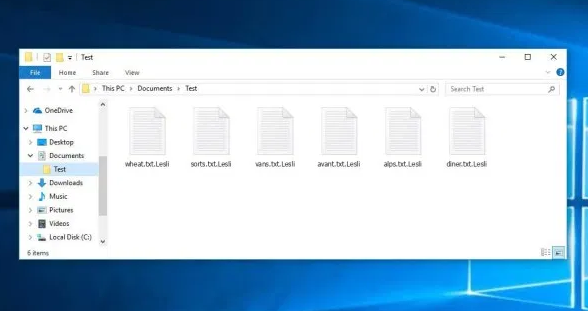
Data decryption even after payment isn’t guaranteed so you could just end up wasting your money. What is preventing cyber crooks from just taking your money, and not providing anything in return. The criminals’ future activities would also be supported by that money. File encrypting malware already costs billions to businesses, do you really want to support that. Crooks also realize that they can make easy money, and when people pay the ransom, they make the ransomware industry attractive to those kinds of people. Investing the amount that is requested of you into reliable backup would be better because if you are ever put in this kind of situation again, you could just recover data from backup and not worry about their loss. You can then proceed to file recovery after you terminate Lesli ransomware virus or related infections. Ransomware spread methods may not be known to you, and we will explain the most common ways below.
Ransomware distribution methods
A file encrypting malware commonly uses basic methods to spread, such as spam email and malicious downloads. There’s often no need to come up with more sophisticated ways because many users aren’t careful when they use emails and download something. There is some possibility that a more elaborate method was used for infection, as some ransomware do use them. All hackers need to do is pretend to be from a real company, write a convincing email, attach the infected file to the email and send it to possible victims. Money related problems are a common topic in those emails since people tend to engage with those emails. Crooks like to pretend to be from Amazon and caution you that unusual activity was observed in your account or a purchase was made. Be on the lookout for certain things before you open files added to emails. Most importantly, check if the sender is known to you before opening the file added to the email, and if they aren’t known to you, check them carefully. And if you do know them, check the email address to make sure it is actually them. The emails can be full of grammar mistakes, which tend to be quite obvious. Take note of how the sender addresses you, if it is a sender with whom you’ve had business before, they’ll always greet you by your name, instead of a typical Customer or Member. Unpatched program vulnerabilities may also be used for contaminating. Those weak spots are generally found by security specialists, and when software makers find out about them, they release updates so that malicious parties can’t take advantage of them to contaminate devices with malware. As WannaCry has shown, however, not everyone rushes to install those patches. We recommend that you regularly update your software, whenever a patch becomes available. You could also make updates install automatically.
How does it act
Ransomware does not target all files, only certain kinds, and when they’re identified, they’ll be locked. Your files will not be accessible, so even if you don’t see what’s going in the beginning, you will know eventually. All encoded files will have an extension added to them, which can help people find out the ransomware’s name. Unfortunately, it might impossible to decrypt data if a powerful encryption algorithm was implemented. After the encryption process is completed, you’ll see a ransom notification, which ought to make clear, to some extent, what happened to your files. You’ll be demanded to pay a certain amount of money in exchange for data decryption via their tool. A clear price should be displayed in the note but if it’s not, you will have to email criminals through their given address. As you already know, paying isn’t the option we would suggest. You should only consider paying as a last resort. Maybe you just do not recall creating copies. Or, if you’re lucky, a free decryptor may have been released. If the file encrypting malicious software is decryptable, a malware specialist may be able to release a utility that would unlock Lesli ransomware files for free. Before you decide to pay, look into a decryption program. A much smarter purchase would be backup. If you have saved your files somewhere, you can go recover them after you fix Lesli ransomware virus. Now that you’re aware of how harmful this kind of infection can be, do your best to avoid it. You primarily need to always update your programs, only download from secure/legitimate sources and stop randomly opening files attached to emails.
How to fix Lesli ransomware virus
an anti-malware tool will be a necessary program to have if you wish to get rid of the file encrypting malware in case it is still inhabiting your computer. To manually fix Lesli ransomware is no easy process and could lead to additional damage to your device. Using a malware removal utility is a better choice. This program is beneficial to have on the device because it will not only make sure to fix Lesli ransomware but also put a stop to similar ones who try to get in. Find which malware removal tool is most suitable for you, install it and allow it to perform a scan of your computer in order to locate the infection. The utility isn’t capable of recovering your data, however. When your device is free from the infection, begin routinely create copies of your files.
Offers
Download Removal Toolto scan for Lesli ransomwareUse our recommended removal tool to scan for Lesli ransomware. Trial version of provides detection of computer threats like Lesli ransomware and assists in its removal for FREE. You can delete detected registry entries, files and processes yourself or purchase a full version.
More information about SpyWarrior and Uninstall Instructions. Please review SpyWarrior EULA and Privacy Policy. SpyWarrior scanner is free. If it detects a malware, purchase its full version to remove it.

WiperSoft Review Details WiperSoft (www.wipersoft.com) is a security tool that provides real-time security from potential threats. Nowadays, many users tend to download free software from the Intern ...
Download|more


Is MacKeeper a virus? MacKeeper is not a virus, nor is it a scam. While there are various opinions about the program on the Internet, a lot of the people who so notoriously hate the program have neve ...
Download|more


While the creators of MalwareBytes anti-malware have not been in this business for long time, they make up for it with their enthusiastic approach. Statistic from such websites like CNET shows that th ...
Download|more
Quick Menu
Step 1. Delete Lesli ransomware using Safe Mode with Networking.
Remove Lesli ransomware from Windows 7/Windows Vista/Windows XP
- Click on Start and select Shutdown.
- Choose Restart and click OK.

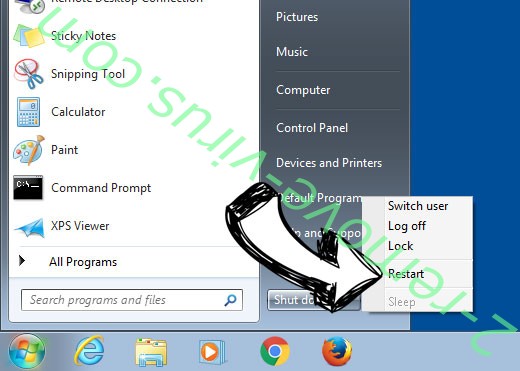
- Start tapping F8 when your PC starts loading.
- Under Advanced Boot Options, choose Safe Mode with Networking.

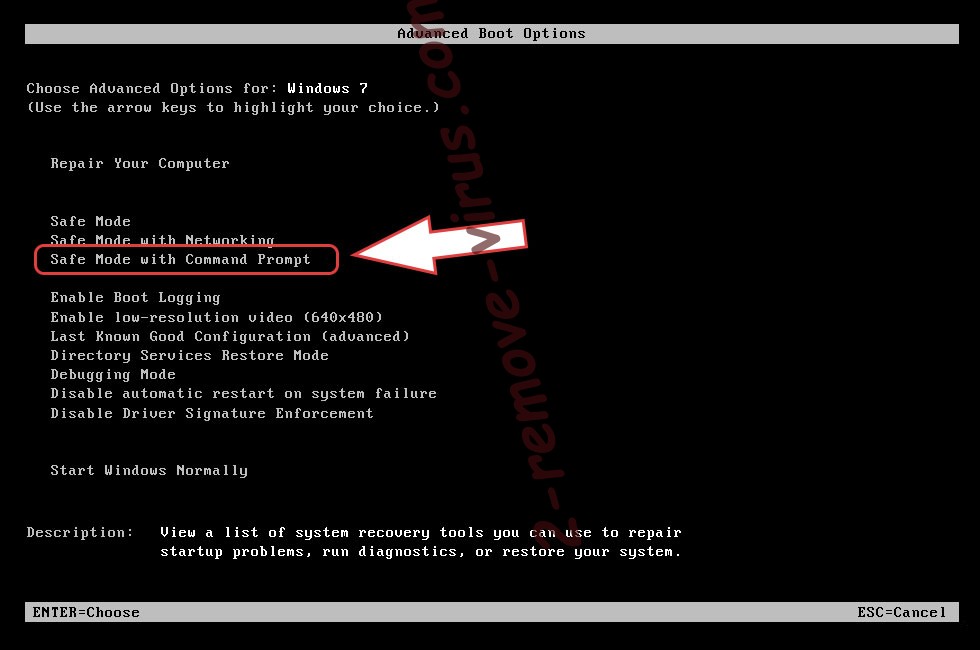
- Open your browser and download the anti-malware utility.
- Use the utility to remove Lesli ransomware
Remove Lesli ransomware from Windows 8/Windows 10
- On the Windows login screen, press the Power button.
- Tap and hold Shift and select Restart.

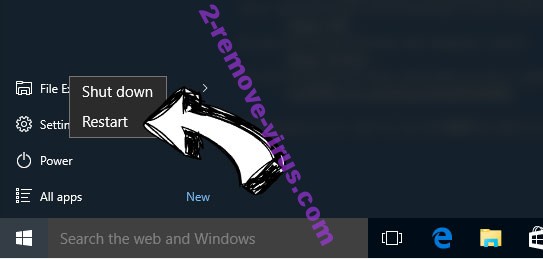
- Go to Troubleshoot → Advanced options → Start Settings.
- Choose Enable Safe Mode or Safe Mode with Networking under Startup Settings.

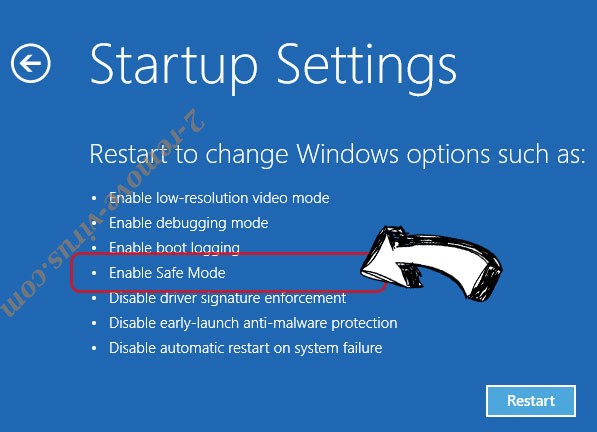
- Click Restart.
- Open your web browser and download the malware remover.
- Use the software to delete Lesli ransomware
Step 2. Restore Your Files using System Restore
Delete Lesli ransomware from Windows 7/Windows Vista/Windows XP
- Click Start and choose Shutdown.
- Select Restart and OK


- When your PC starts loading, press F8 repeatedly to open Advanced Boot Options
- Choose Command Prompt from the list.

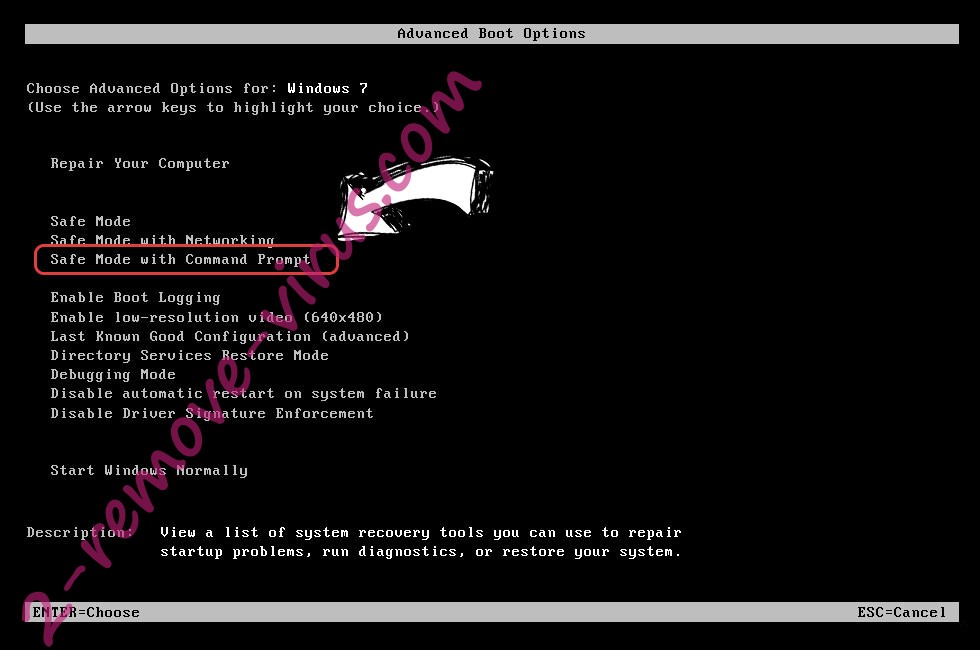
- Type in cd restore and tap Enter.

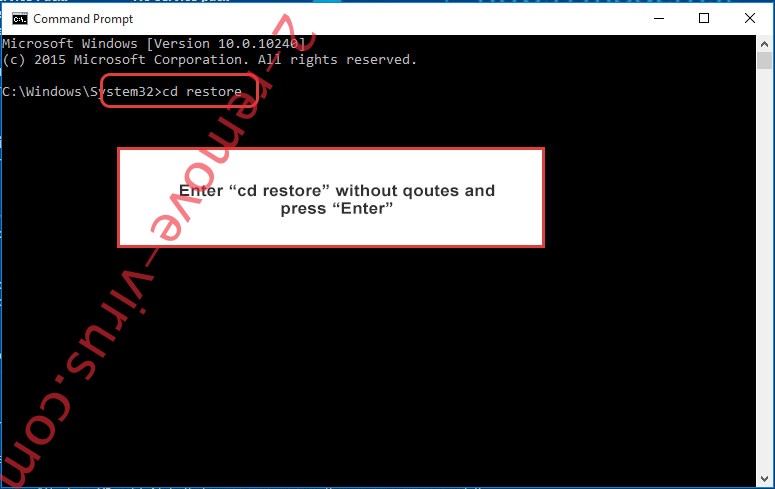
- Type in rstrui.exe and press Enter.

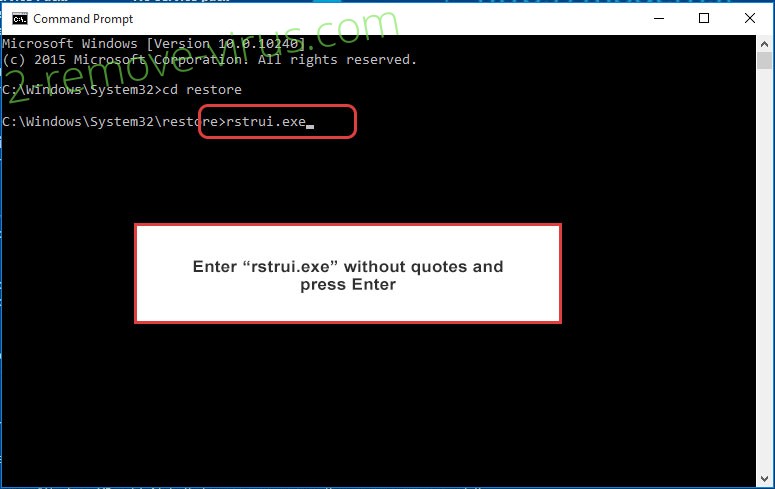
- Click Next in the new window and select the restore point prior to the infection.

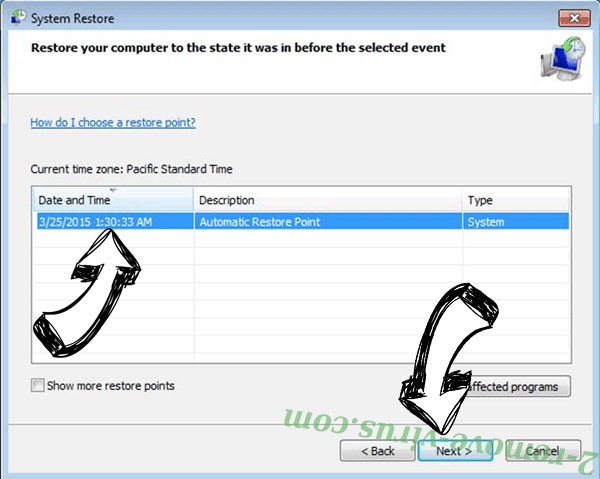
- Click Next again and click Yes to begin the system restore.

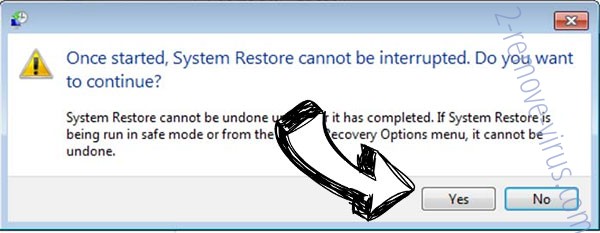
Delete Lesli ransomware from Windows 8/Windows 10
- Click the Power button on the Windows login screen.
- Press and hold Shift and click Restart.


- Choose Troubleshoot and go to Advanced options.
- Select Command Prompt and click Restart.

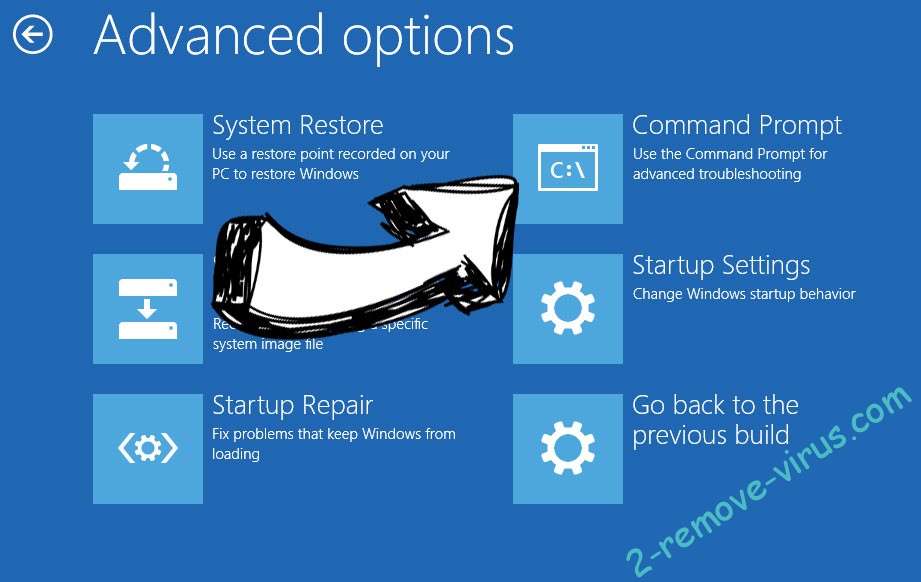
- In Command Prompt, input cd restore and tap Enter.


- Type in rstrui.exe and tap Enter again.


- Click Next in the new System Restore window.

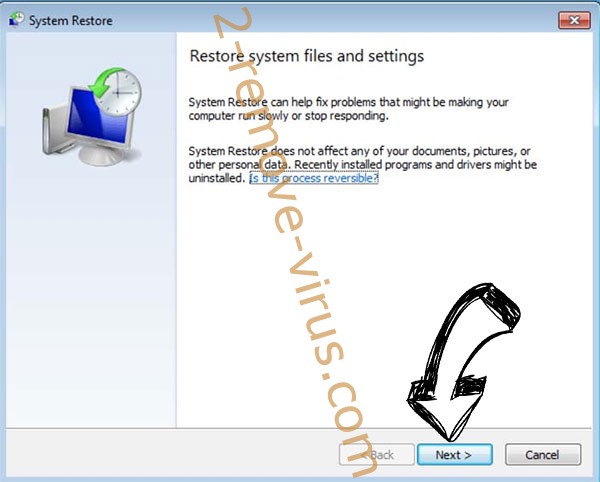
- Choose the restore point prior to the infection.


- Click Next and then click Yes to restore your system.


Site Disclaimer
2-remove-virus.com is not sponsored, owned, affiliated, or linked to malware developers or distributors that are referenced in this article. The article does not promote or endorse any type of malware. We aim at providing useful information that will help computer users to detect and eliminate the unwanted malicious programs from their computers. This can be done manually by following the instructions presented in the article or automatically by implementing the suggested anti-malware tools.
The article is only meant to be used for educational purposes. If you follow the instructions given in the article, you agree to be contracted by the disclaimer. We do not guarantee that the artcile will present you with a solution that removes the malign threats completely. Malware changes constantly, which is why, in some cases, it may be difficult to clean the computer fully by using only the manual removal instructions.
